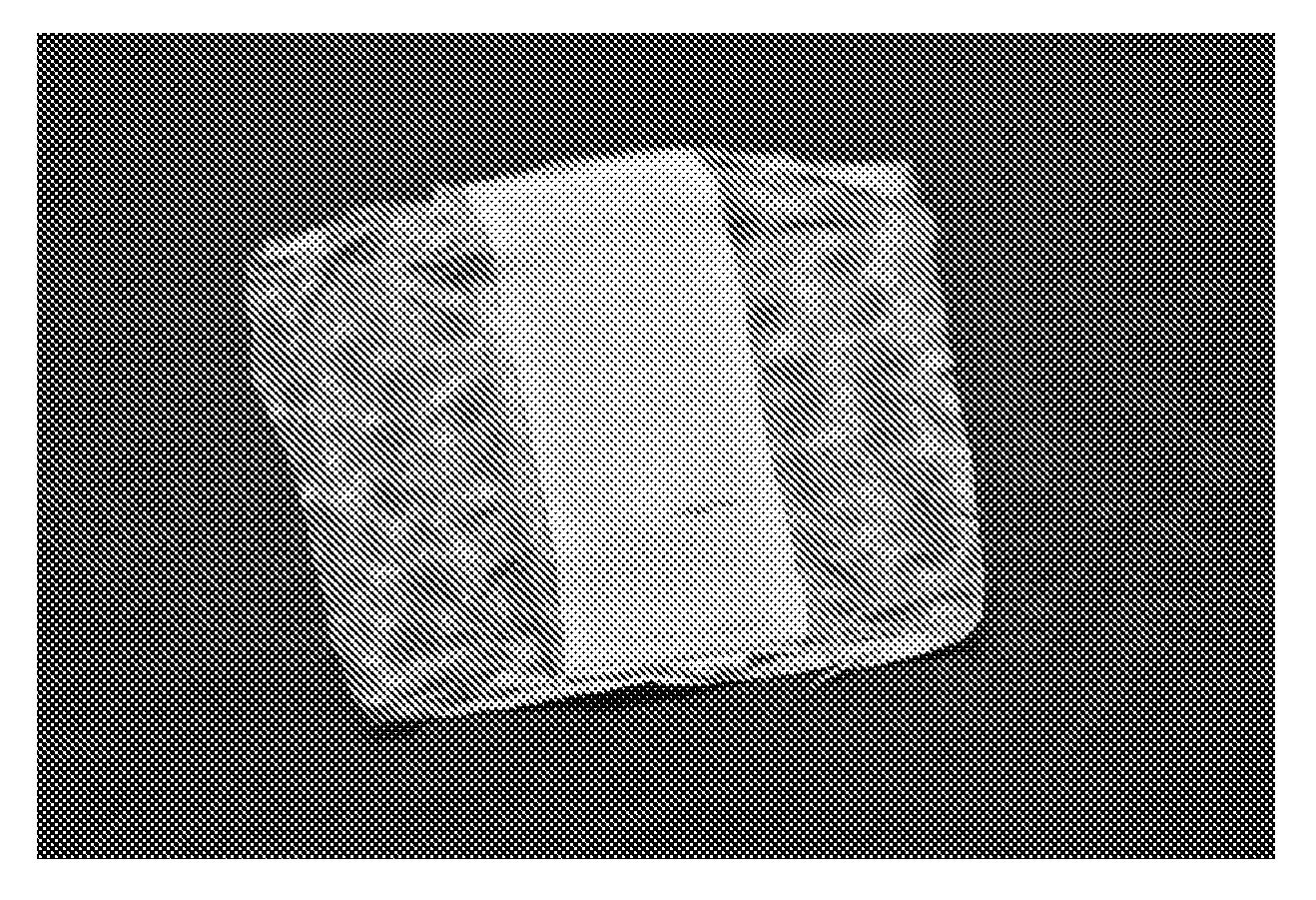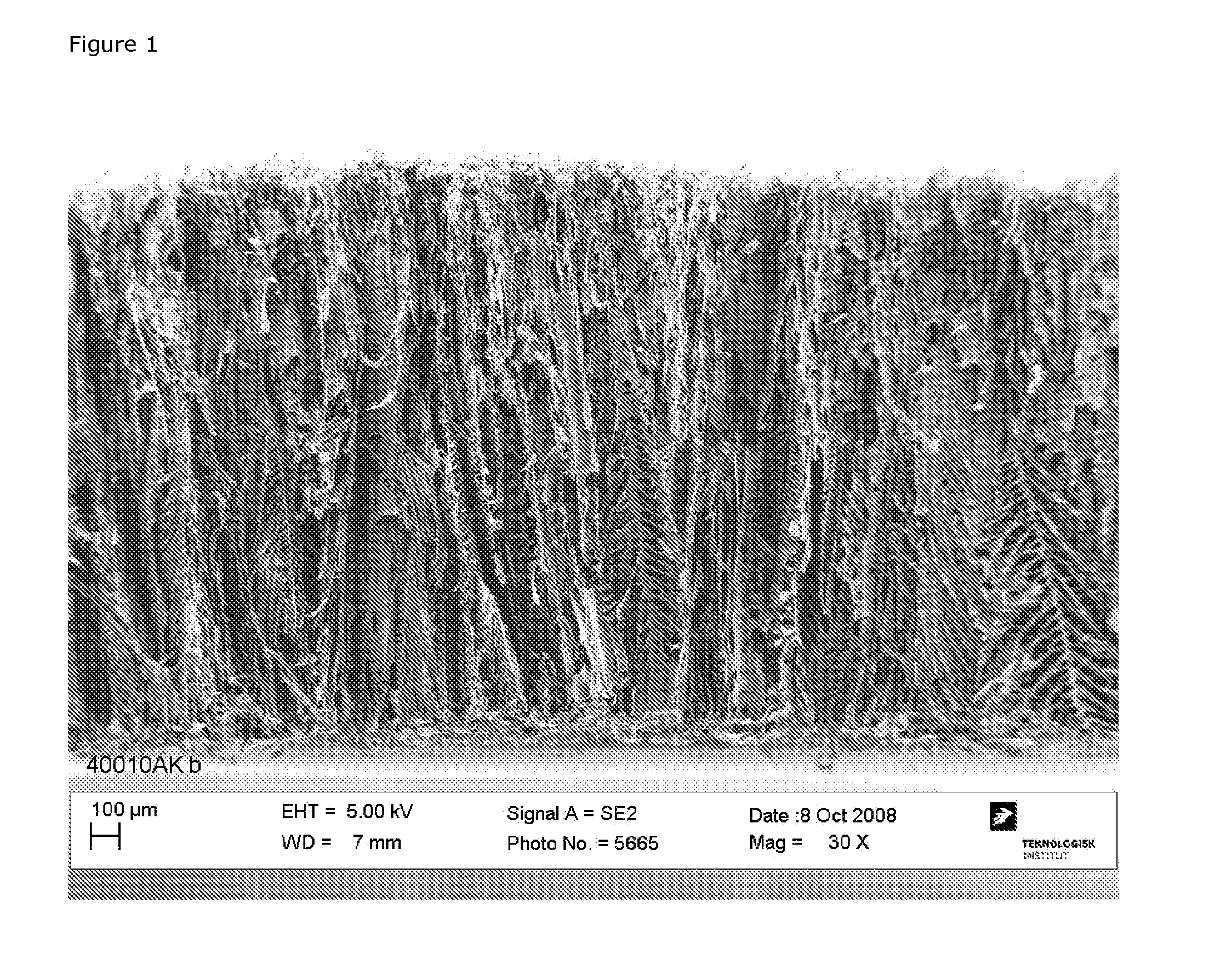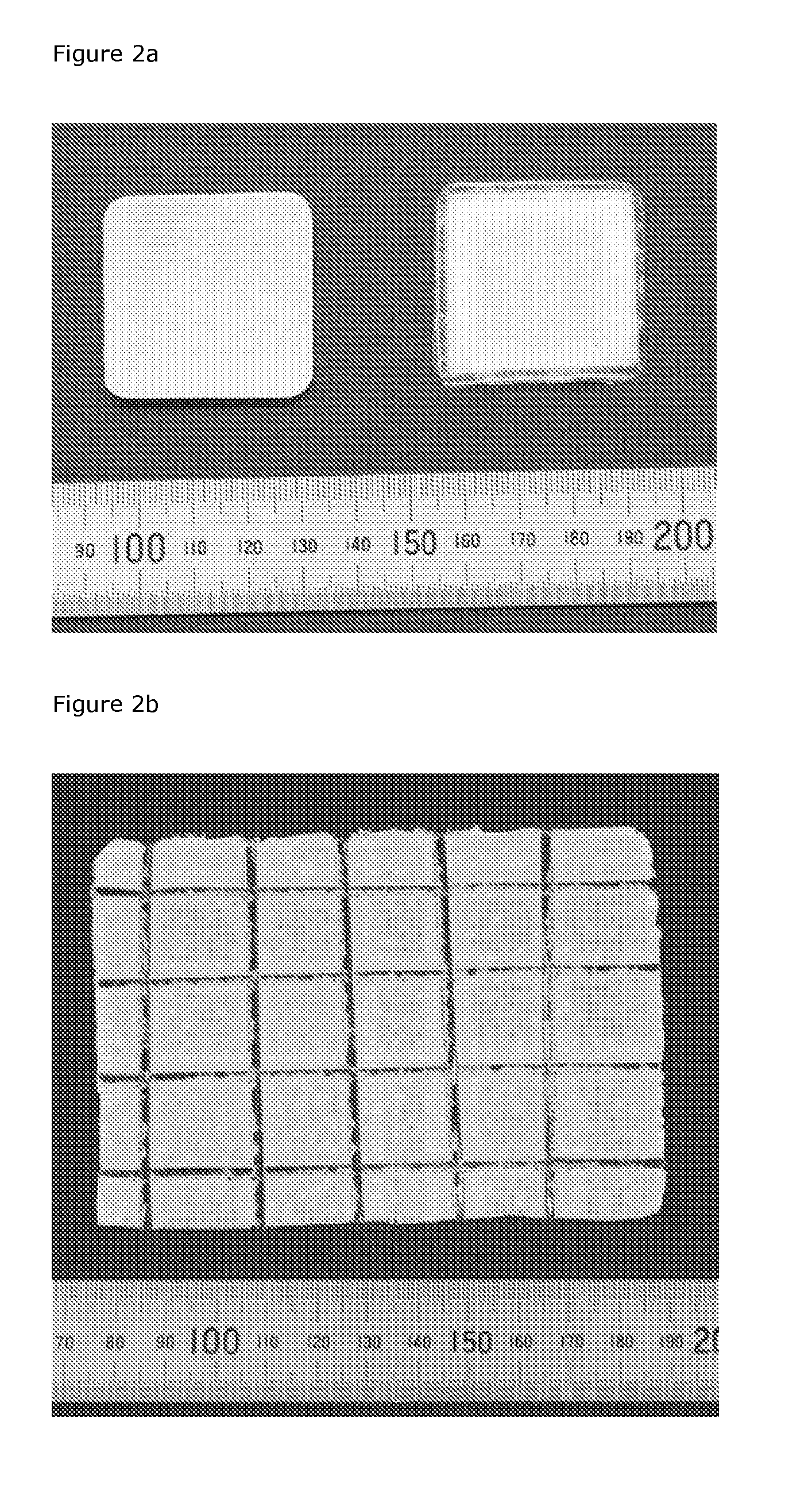Biodegradable scaffold for soft tissue regeneration and use thereof
a biodegradable and soft tissue technology, applied in the field of new reinforced biodegradable scaffolds, can solve the problems that the optimal handling of surgical implants with soft tissue regeneration properties in patients is not always optimal, and achieves the effects of convenient handling, sufficient strength and sufficient structural suppor
- Summary
- Abstract
- Description
- Claims
- Application Information
AI Technical Summary
Benefits of technology
Problems solved by technology
Method used
Image
Examples
example 1
[0367]Welding Seams
[0368]Scaffolds are sheets of freeze-dried structures. They are made by freezing / freeze-drying a solution of polymer. This results in a porous open celled structure where the pores are oriented mainly along the direction of freezing. This orientation can be seen on FIG. 1.
[0369]This orientation means that the material has very low tear strength. To strengthen the material, weld seams are added. The material is compressed / melted, thereby loosing the structure described above and gaining strength. This means that the material can take the stress of suturing and handling. This welding can be done by pulse welding, laser welding or similar heat treatment.
[0370]These welding seams can be either added only to the edge or in a grid pattern for even more strength. By having a grid pattern, it will be possible to cut the scaffold to size without losing the strength.
[0371]2 Layer Scaffold with Different Degradation Times
[0372]It can be desirable to have a layer of the devic...
example 2
[0390]Flexibility
[0391]Regarding the flexibility of the scaffold, as it is depicted in FIG. 6 that when the scaffold is dry, it is rigid. On the other hand, once it is wet it becomes very pliable. This compared to the polypropylene mesh, which does not become less rigid, after exposure to water.
example 3
[0392]Determination of the Strength of the Scaffolds with and without Weld Seams
[0393]Apparatus: Lloyd tensile tester with a 50 N load cell. Speed: 100 mm / min, separation of jaws 20 mm.
[0394]Scaffolds (40×40×2 mm) are cut into strips that are 5 mm wide. In some of these, a 3 mm weld seam is made along the length of the strip (this weld seam has a thickness of approximately 0.1 mm). The maximum force and elongation at break is measured for both unmodified and welded strips.
Maximum Deflection at% elongationLoad (N)Break (mm)at breakN / m2psiUnmodified0.9110.2851.399.13E+04 13Unmodified0.9210.6053.029.16E+04 13Unmodified0.708.7443.716.99E+04 10Unmodified0.8411.0955.468.37E+04 12welded15.0537.81189.075.02E+077275welded13.5159.49297.444.50E+076533welded9.5341.31206.543.18E+074607welded11.1944.28221.383.73E+075409
PUM
| Property | Measurement | Unit |
|---|---|---|
| Temperature | aaaaa | aaaaa |
| Fraction | aaaaa | aaaaa |
| Fraction | aaaaa | aaaaa |
Abstract
Description
Claims
Application Information
 Login to View More
Login to View More - R&D
- Intellectual Property
- Life Sciences
- Materials
- Tech Scout
- Unparalleled Data Quality
- Higher Quality Content
- 60% Fewer Hallucinations
Browse by: Latest US Patents, China's latest patents, Technical Efficacy Thesaurus, Application Domain, Technology Topic, Popular Technical Reports.
© 2025 PatSnap. All rights reserved.Legal|Privacy policy|Modern Slavery Act Transparency Statement|Sitemap|About US| Contact US: help@patsnap.com



